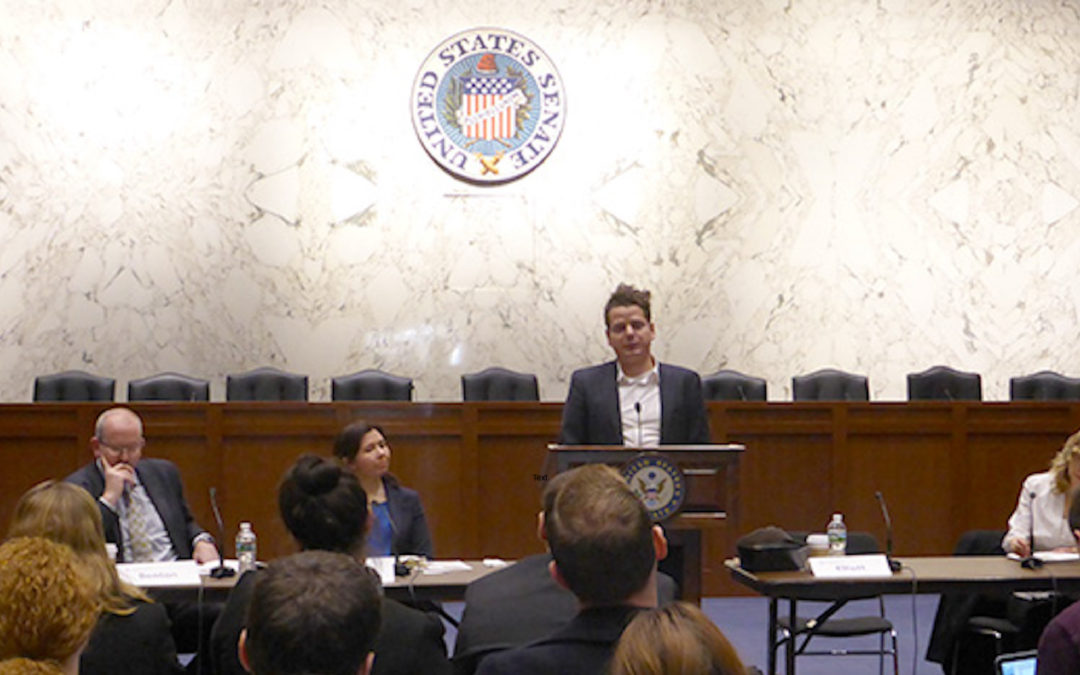Photo: Joshua Elliott speaking as part of food shock panel Photo credit: Sian Williams
By James Oliver
Some of the more notable and adverse effects of climate change are weather extremes. These events occur on a much shorter time-scale than climatic shifts, but can be influenced by the overarching, changing climate of a region. Extreme phenomena can also have immediate and detrimental impacts on food systems in the areas affected. To present updated research on the frequency of extreme events, a panel of British and American scientists took part in a congressional briefing earlier this month.
The American Association for the Advancement of Science (AAAS) held their annual meeting in Washington D.C. from February 11th- 15th. AgMIP’s leader of Global Gridded Crop Modeling Intercomparison (GGCMI), Joshua Elliott, along with several other scientists, were on hand to speak about the increasing likelihood of more frequent “food shocks” in the future. A food shock occurs when crop growth is significantly obstructed by an extreme event. This dearth of a particular crop can have palpable effects not only in the localized region, but also around the world. Global food prices can be altered dramatically by a single food shock occuring within a small region.
One notable food shock took place in 2012 across the American Midwest. The worst drought in half a century hit the area and resulted in spikes in worldwide maize and soybean markets. These price jumps can have frightening consequences on global food security. Increased household expenditures, reduced access to adequate food in poor communities, and civil unrest in places with fragile governance are all possible repercussions of a localized food shock.
Looking to the future, the concern now is if whether or not extremes will occur more frequently. In an interview with BBC, Elliott outlined how an increased likelihood of harsh weather events in the future could reshape our agricultural methodologies.
“If extreme events happen irregularly enough, that’s okay, because you might have 10 or 20 good years before you get a truly extreme bad year, and so that frequency isn’t enough to really try to breed for or prepare technologically for those extreme events. But as extreme events start to become more frequent and more severe that’s likely to no longer be the case and we may have to actually completely reframe how we breed crops, how we develop new management strategies so that we can actually breed for variance, and breed for resilience, not just breed for yield,“ Elliott explained.
At the Washington D.C. briefing, the panel of scientists explained to Congress what would normally be considered a 1-in-100 year event, will be likely to occur as often as every 30 years by mid-century. On top of this, studies suggest that an increased reliance on global trade can amplify the fallout from these shocks. They assured Congress that action is needed to improve the resilience of the global food system.
The panel gave several recommendations in order to lessen the impacts of future extremes. They suggest we need to fully understand the risks by increasing research into extreme weather and global interconnectedness. We need to look into coordinated risk management within regions, countries, and the world, and improve the functioning of international markets. Additionally, if we implement helpful policies and appropriate adaptation strategies, resilience, productivity, and sustainability can all be greatly improved.

